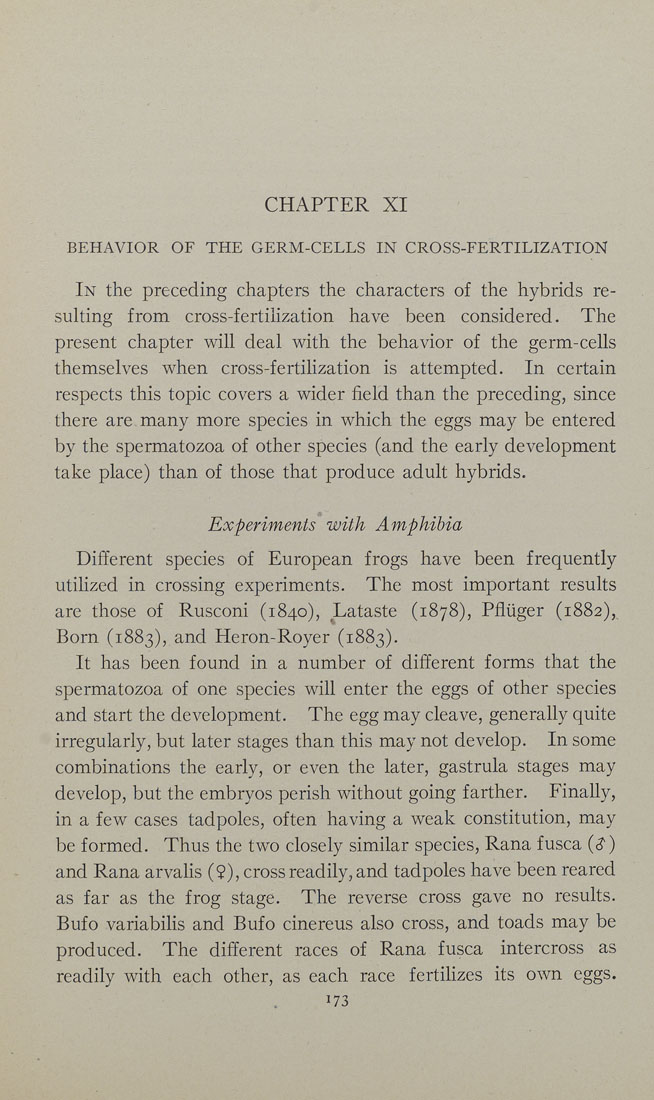CHAPTER XI
BEHAVIOR OF THE GERM-CELLS IN CROSS-FERTILIZATION
In the preceding chapters the characters of the hybrids re¬
sulting from cross-fertihzation have been considered. The
present chapter will deal with the behavior of the germ-cells
themselves when cross-fertilization is attempted. In certain
respects this topic covers a wider field than the preceding, since
there are many more species in which the eggs may be entered
by the spermatozoa of other species (and the early development
take place) than of those that produce adult hybrids.
Experiments with Amphibia
Different species of European frogs have been frequently
utilized in crossing experiments. The most important results
are those of Rusconi (1840), Lataste (1878), Pfliiger (1882),
Born (1883), and Heron-Royer (1883).
It has been found in a number of different forms that the
spermatozoa of one species will enter the eggs of other species
and start the development. The egg may cleave, generally quite
irregularly, but later stages than this may not develop. In some
combinations the early, or even the later, gastrula stages may
develop, but the embryos perish without going farther. Finally,
in a few cases tadpoles, often having a weak constitution, may
be formed. Thus the two closely similar species, Rana fusca {$)
and Rana arvalis (?), cross readily, and tadpoles have been reared
as far as the frog stage. The reverse cross gave no results.
Bufo variabilis and Bufo cinereus also cross, and toads may be
produced. The different races of Rana fusca intercross as
readily with each other, as each race fertihzes its own eggs.
173
|








